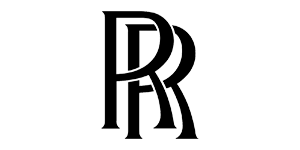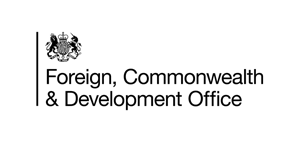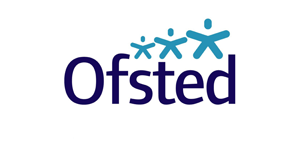Coaching with Silence


“As we must account for every idle word, so must we account for every idle silence.” Benjamin Franklin
In a couple of recent supervision sessions two coaches discussed sessions where they had asked few, if any, questions and yet at the end of the sessions it was evident that progress had been made and the client had thanked them for their assistance.
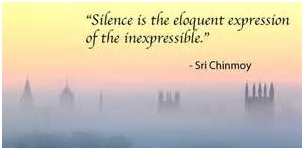
Both coaches were a little despondent and frustrated, saying that they had “done nothing” and were questioning what added value they had contributed. In fact, both had made a positive contribution, conscious (or even unconscious!) use of silence. That also fails to acknowledge the other significant contribution made by the coaches – laying strong and resilient foundations for the coaching relationship through careful, bespoke contracting, which built rapport and trust with each client which was evidenced by the client feeling confident enough, and comfortable with the use of silence by the coach, to disclose information and innermost thoughts.
This led me to reflect on the use of silence in relation to coaching sessions and the following points occurred to me:
- The Silence of the Client – even more frightening for a coach than the Silence of the Lambs!! Here I am assuming that the client is in a “healthy” state, as Julie Starr in The Coaching Manual, describes i.e. they are able to actively and fully participate in a session. The critical factors here for me are the timing of the silence and also the context of the silence.
– Timing – when the silence occurs is interesting to reflect upon. If the silence occurs near to the start of the session (or the relationship), this could be an indication of the client “testing the water” to see if it is safe to engage. My own coaching practice is that in advance of the initial session I forward copies of my coaching agreement, my profile, code of ethics and also a “What is coaching” document. In the session I then check for understanding, and specifically always explain what confidentiality means. I also ask the client if they wish to add anything into the coaching agreement. I have found that this approach assists in quickly developing trust and rapport with the clients, as opposed to simply addressing this verbally in the first session.
If the silence persists, or if it appears later in the coaching relationship, as a coach I begin to evaluate whether the client is ready to be coached (or still engaged with the coaching intervention) and, also, whether I am the right coach for that client.
Mick Cope in The Secrets of Success in Coaching, [2010] Pearson Education Limited, states “As a coach you are there to help the client deliver value through sustainable change- not to do it for them. But this leads to the question: do they want to change, or like so many people who try to change, do they just want to want to? In essence, you need to identify those who can and want to change, as opposed to those who won’t or can’t.”
Cope then outlines what I refer to as The 5 P tool, which describes five category of client, in a descending scale: Players, Participants, Passengers, Prisoners and Protestors. If dealing with a Prisoner or Protestor do not forget to consider your own interests as the coach- do you really want to coach the person? What is the risk that this could pose to your reputation or your practice? What countermeasures can you take to minimise the risk?
– Context – reflect on when the silence occurs – what preceded it? Is the silence evidence of the client reflecting? There may be clues from the position of the client’s eyes or from other body language. Alternatively, is the silence evidence of disengagement or avoidance. Watch out for mounting that white charger and going into rescuer mode! Some clients can use silence to avoid addressing the issue. One of the skills that you will quickly develop as your coaching experience grows is knowing when to break that silence.
Reflect on what your practice is when faced with a silent client? Is this an area for improvement – is it part of your coach continuous development plan? Is it one of the elements you focus upon in as part of your reflective practice.
- Boundary Management – once again the focus here is the silent client. Silence could be an early indicator for you as the coach that the client may need a different type of intervention other than coaching – for example counselling or therapy. Is there still a genuine, mutually engaged and active, coaching relationship? Once again the timing and context are critical factors, as will be the client’s behaviour, actions and emotional state. Consider your own coaching practice – have you planned for this arising? How will you deal with this? Have you identified referral points of contact?
- Contracting – How do you prepare your clients for the use of silence? One of the things I have realised on reflecting on my own coaching practice is that I ensure that each coaching agreement is bespoke to each client by specifically asking them about any particular preferences – for example, learning styles, and highlight that silence will be one of the tools that I will be using and seeking their permission/consent to this. This means that they do not start to be distracted by the silence, wondering what is going on etc. My experience has been that this has led to faster engagement and has reinforced trust and rapport.
- Self-Management – as a coach, your ability to use and manage silence is a good indicator as to your ability to manage your “self” as a coach. Resist the urge to jump in or interrupt – that could distract your client’s thought process, or, it could reduce the impact of a powerful question that you asked – the one that would have provoked a “aha” or lightbulb moment! By breaking the silence, you let the client off the hook of having to answer that question. Reflect on your own coaching practice – are you more aligned to a Trappist monk approach (honouring the silence) or a Ski- Jumper (leaping in)?
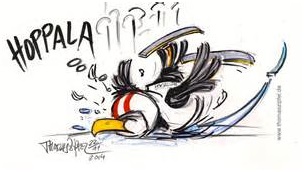
- Questioning – to quote Ronan Keating (I NEVER envisaged the day when I would use that phrase!!) “You say it best, when you say nothing at all”. OK, stop singing now, I apologize for creating that Earworm! Silence can be a powerful form of questioning – but beware that you make sure that it does not enter the realm of confrontation or oppression. Silence is a good response when the client responds to your question by asking “What do you think?” If the client is silent – that is often a prompt for questions to explore what was going on and what they were thinking of.
- Challenge – similar to questioning, the use of silence can be a form of challenge to the client – prompting the client to reflect or evaluate what they have said or thought. Again, be careful as to how silence is used and avoid it becoming oppressive or confrontational.
- Duration – the reason why silence is so powerful is that we have a natural human instinct to interact with others and it can feel very uncomfortable breaking those societal norms by using silence. There is no golden rule as to how long an “appropriate” silence should last – each client and each situation is different. One of the key skills that I have always seen develop as coaches gain more experience, is that they become more comfortable in handling silence and the duration of those silences increases as their experience increases. Reflect on your practice – do you allow the silence to be used to maximum effect? Is this something that could be improved upon? Have you tried timing a minute’s silence – how did it feel? Longer or shorter than you imagined? Comfortable or uncomfortable?

- Evidence of ethical and professional coaching – my approach when asked if I am coaching a particular individual (or team) or when asked to disclose additional information beyond that contracted with the client (and sponsor) can be best depicted by the following image.

Silence is not simply desirable in these situations, it is critical. The wartime slogan was “Loose Lips Cost Lives”, as a coach our slogan should perhaps be: “Loose Lips Costs Clients and Your Reputation”.
- Critical Review/Reflection – Finally, as a coach, critical review/reflection is an essential skill that you will need to develop to ensure your own continuous professional development. The use of a short period of silence after a coaching session is a useful practice to develop as this enables you to capture key highlights from the session and also serves to “ground” yourself as preparation for the next client.
Finally, how could I deal with the topic of silence without quoting from Simon & Garfunkel’s “Sound of Silence”. Silence in coaching is “People talking without speaking”.



